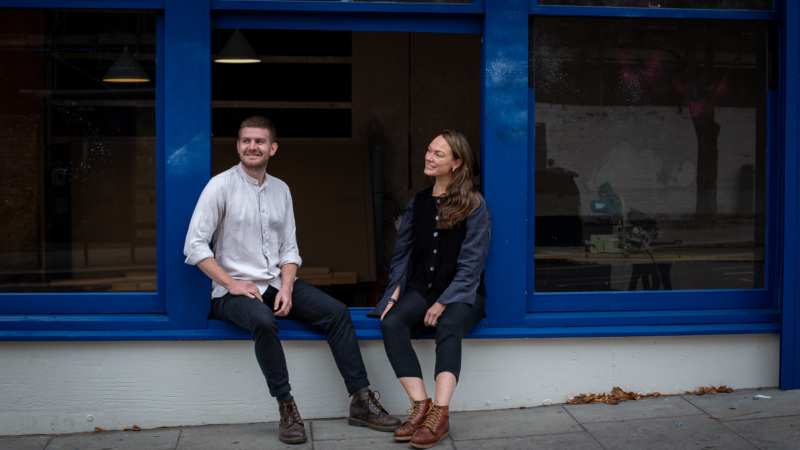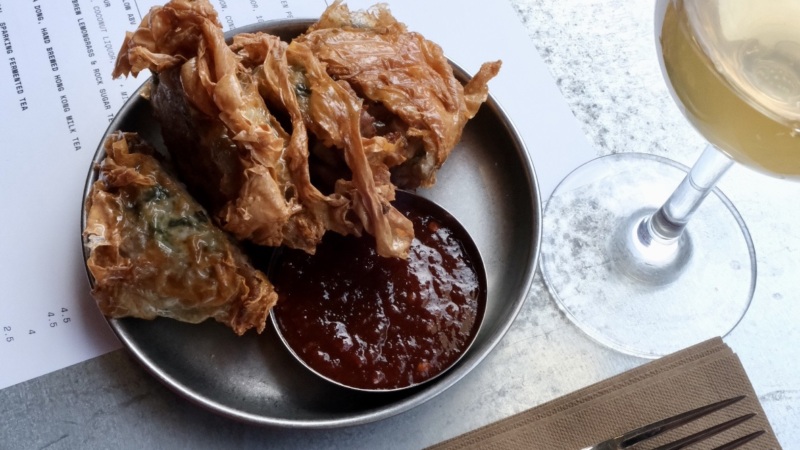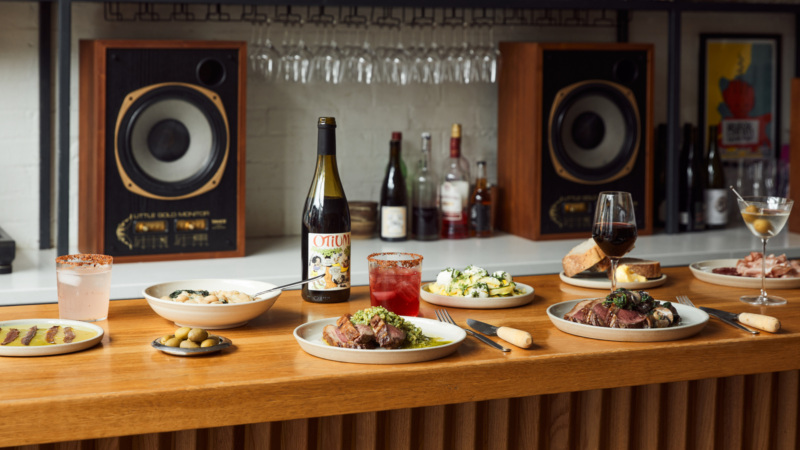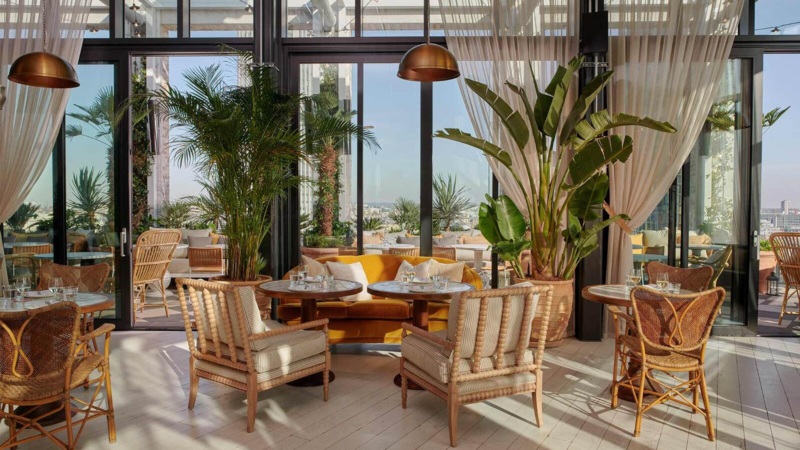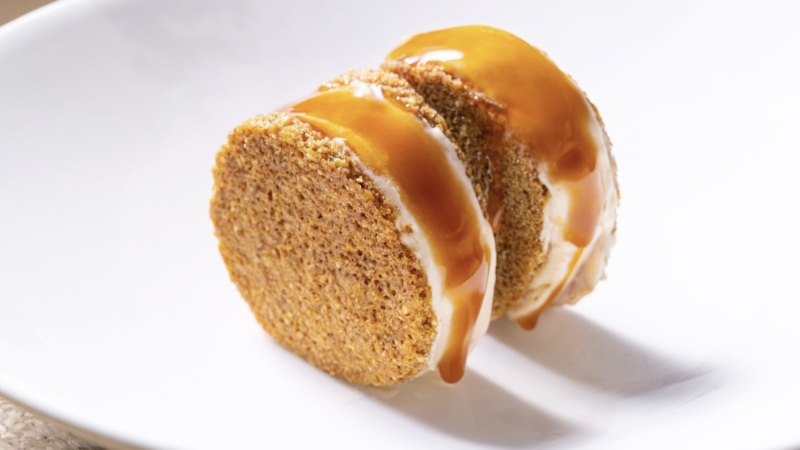
Leroy Has The Makings Of A Classic London Restaurant
Published:
As a restaurant, Leroy is the apotheosis of what Londoners expect when we eat out today—the attention to detail to feel special, a vibe relaxed enough for a few drinks after work, and the culinary mettle to go deep on an ever-changing menu with friends. A warm, contemporary Shoreditch wine bar and restaurant with a strong French accent, the restaurant evolved from the now-defunct Ellory in London Fields into its current incarnation when owners Ed Thaw and Jack Lewens moved to take advantage of the cheaper rents close to Old Street.
Considering that Ellory had earned and retained a coveted Michelin star, it wasn’t a decision the owners took lightly. “It had come to the turn of the year, and we realised that running two restaurants was too ambitious, and that we should take what we had, and move it [to Shoreditch]”, co-owner Ed Thaw says. “And instead of dropping Ellory into a fundamentally different space, it was about reselling the conversation and starting a new chapter.”
Other than the in-joke that no-one could pronounce the first restaurant’s name—‘Leroy’ being the number one corruption of Ellory, and thus the de facto nickname—the baggage of being a decorated restaurant that relocated and had to start from scratch bore little appeal. “It just got to the point where we said, ‘You know what? [Michelin] can do whatever they want, and we’ll do what we want for ourselves’. And that was totally the right decision.”
That decision was further proven to be the right call when Leroy earned its own star earlier this month in the 2019 handbook. For an old-school guide like Michelin, the inclusion of an establishment that had quickly become one of London’s most beloved meant two things: first, that the dusty ratings system was at least trying to move with the times, and second, given Leroy’s relaxed approach, that eating well in London (at least by their definition) had never been so accessible.
That’s a credit to both Thaw and Lewens, but also largely to head chef Sam Kamienko, a Melbourne native and Francophile who cut his teeth in his hometown before working in Paris and New York, eventually settling in the Big Smoke.

The Land of The Smiths and Shakespeare
The food at Leroy—an understated take on seasonal and produce-led French bistro cooking—is equal parts familiar and exciting, combining British and European ingredients with classic French and contemporary technique. “I love cooking and eating simple food, and really cooking from memories and experiences that I’ve had while working as a chef around the globe”, Kamienko enthuses. “Leroy really feels like a restaurant that has been here for some time. It just feels more natural, and I can really cook that ‘bistro plus’ style that I love to cook and eat, especially with a nice bottle or glass of vino.”
Uninterested in the ascetic, minimal Nordic style that’s swept high-end gastronomy in the last half-decade, Thaw and Kamienko were aligned on the style of food they envisaged at Leroy. “This is the country of The Smiths and Shakespeare”, Thaw reflects. “We’re a bit more lyrical about it. The minute that stuff gets ponderous, it puts our backs up.”
And befitting its down-to-earth personality, the menu changes constantly. Consider a recent pumpkin dish that Kamienko added to the menu to take advantage of in-season violino pumpkins—slowly steam and dry roasted, the flesh caramelises and takes on an exquisite savoury-salty-sweet flavour that the chef harmonises with beurre blanc. Spinach adds freshness, while shaved chestnuts lend texture and crunch—unbelievably simple, autumn on a plate, and a dish that’s break-your-face good.
By the time you read this, however, the menu will have changed, and something equally delicious will take star billing. “That’s the thing about this kitchen—they’ll put something absolutely amazing on for a week and a half, like a sweetbread dish with gooseberry, that’s really, really clever”, Thaw elaborates. “Most people would keep it as a headline dish, and then it’s off the menu soon after.” The ephemeral nature of a changing menu is, of course, part of its beauty, and a compelling reason to return.
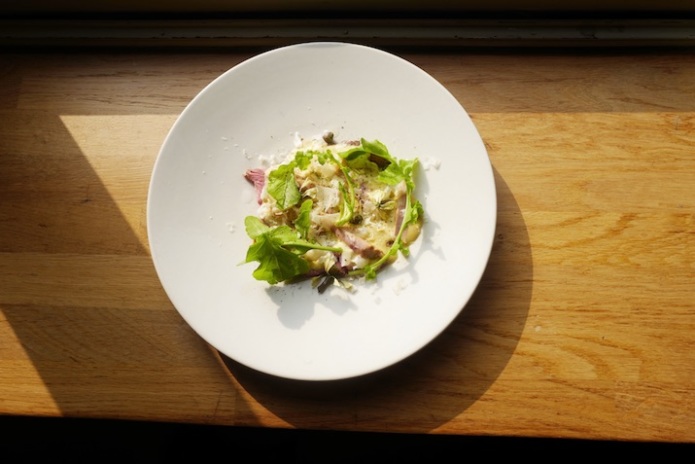
Provenance and Silver Linings
While admitting that the restaurant doesn’t yet have the resources to cook at a “two or three-star level”, the food’s provenance is, nonetheless, impeccable. “We work with amazing suppliers—the way that they package their deliveries and fish are redefining what people can do”, Thaw continues, adding, “When we started, we paid a lot of attention to it, and that included going down to spend a few days with our suppliers in Cornwall to get a sense of where our food comes from.”
While Brexit’s spectre looms over Britain’s restaurants, threatening labour shortages and increased import costs, Thaw sees an opportunity to work even more closely with the network of suppliers needed to put food on the table of a top-flight restaurant. “The silver lining for me is re-engaging with what this country has to offer, and to support a high-value supply chain. If we’re going to eat beef, it’s going to have to be high quality and occasional—we have to fight that fight.”
“Our veg supplier in East Anglia is bringing back varieties that are forgotten or have been lost, and that’s something worth supporting. There’s a lot of opportunity in this country, and I think Brexit is going to make it more imperative for us to find those little things.”
The Good Stuff
Wine, of course, is a huge consideration, and one facet that regularly gets Leroy voted among the best places to drink the stuff in the capital. Progressive but egalitarian, the 100-strong bin leans towards low-intervention bottles while also offering conventional styles.
Though wine is as much a statement about one’s own personality and refinement as it’s ever been, the emphasis here is on variety. “At some point, paying sixty pounds for grape juice can begin to annoy you, no matter how small the guy’s domain or how big his beard is. So I want to think about what’s in my glass—in terms of what’s available in wine, there’s a whole variety, and we want to try and celebrate that.”

That includes the occasional bottle from Vigneti Tardis, a joint venture that Thaw and co-founder Lewens embarked upon with low-intervention winemaker Bruno de Conciliis in Campania. Fellow restaurateurs Stevie Parle, Jackson Boxer and Michael Sager are also involved. The restaurant also makes its own vermouth—undoubtedly influenced by Thaw’s own time in Madrid’s heaving bars—and is working with acclaimed bartender Marcis Dzelzainis of Sager + Wilde. “We’re excited at what we could do with that level of expertise”, Thaw says.
A Very Rare Thing
Of course, food and drink are just two of the several elements that make a restaurant like Leroy feel special.
The intimate, wedge-shaped room has a stunning marble bar dividing the kitchen from the dining room, courtesy of designer Fred Rigby. An abundance of windows, light wood and minimalist artwork from artist Louise Sheeran create the illusion of space, while leather banquettes and handsome vintage chairs from Alsace add warmth and familiarity.
Then there’s the music, a key element in Thaw’s special sauce that makes an evening here one to savour. “We’ve got vintage speakers and soundproofing”, Thaw laughs. “How many places have proper soundproofing? Hardly any. And the effect of that is intangible. The music should be of quite significant volume but you’re still able to converse freely. It’s a very rare thing.”

Perhaps the most memorable element of an evening here, however, is the front of house’s ability to make regulars and new faces feel special. Headed up by Thaw himself, alongside servers Freddie Phillipps and Elliott Kaye, the service at Leroy strikes the fine balance between affability, proficiency, and attention to detail that’s a hallmark of the best restaurants.
To wit, Guardian critic Grace Dent was spot-on when she reflected in a June review that “this is great produce and no one is standing on ceremony about it. Service is joyful and unpushy: if you want to know the CV of the bonnet saucisson, they’ll fill you in; otherwise, they’ll simply leave you be to get quite drunk, as I did, on fleurie. This is what restaurants should be like.”
As Thaw puts it, “the ultimate test of any restaurant experience is–’Would I go back?’– and I think if restaurants are going to survive in this immediate period, you’ve got to deliver value. A five-course tasting menu of little nibbles for fifty pounds feels antiquated.”
Between delivering the best possible experience at an accessible price, while incrementally improving every aspect of the restaurant’s operation, you’d wonder why anyone would bother getting into the business at all. But for Thaw, it comes down to the basic act of hospitality: “I love seeing customers on a regular basis—it’s so much nicer to have a relationship and get to know them, and we’ve got lots of people who come back. That’s definitely the rewarding thing.”
